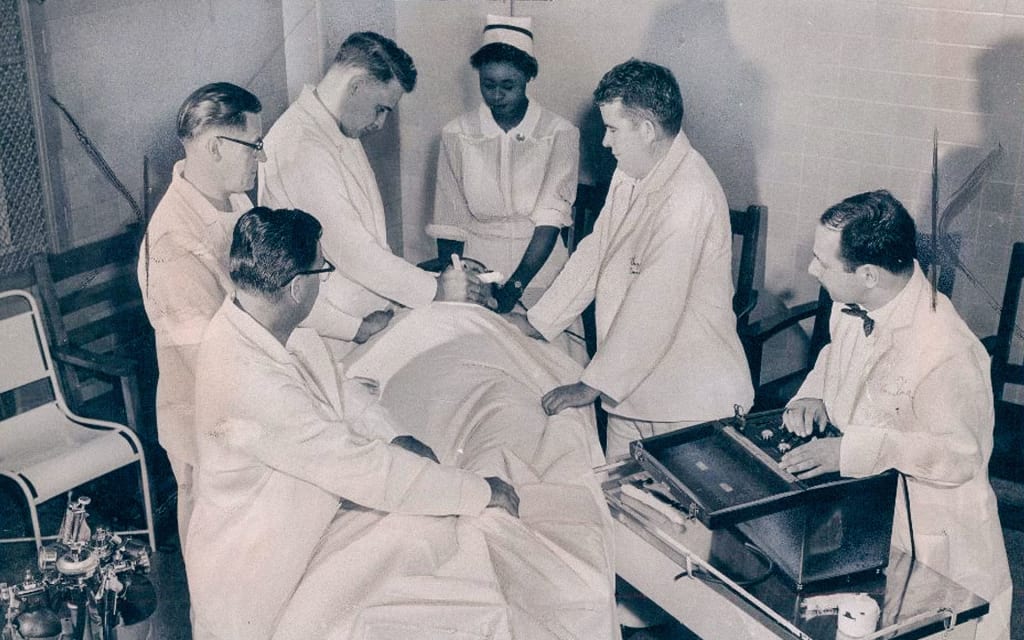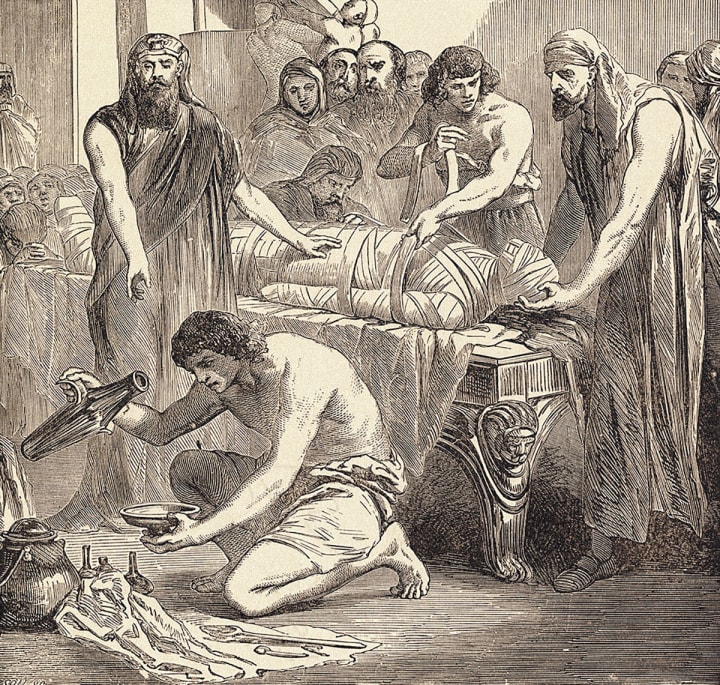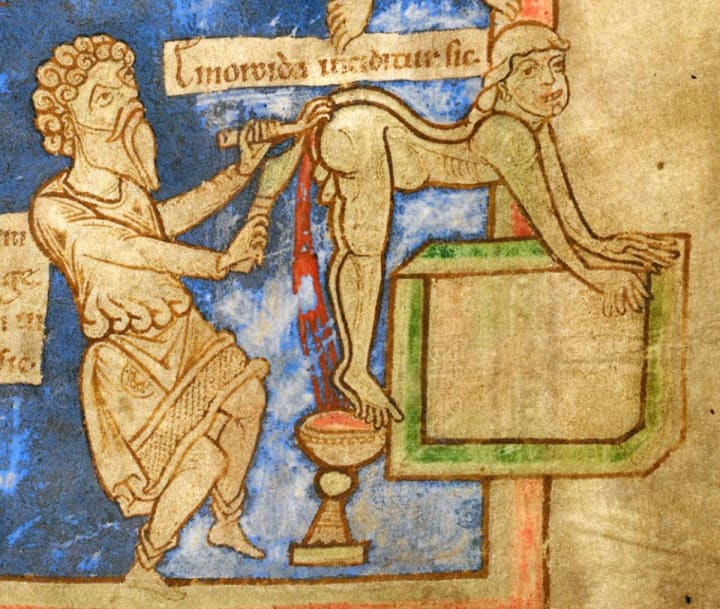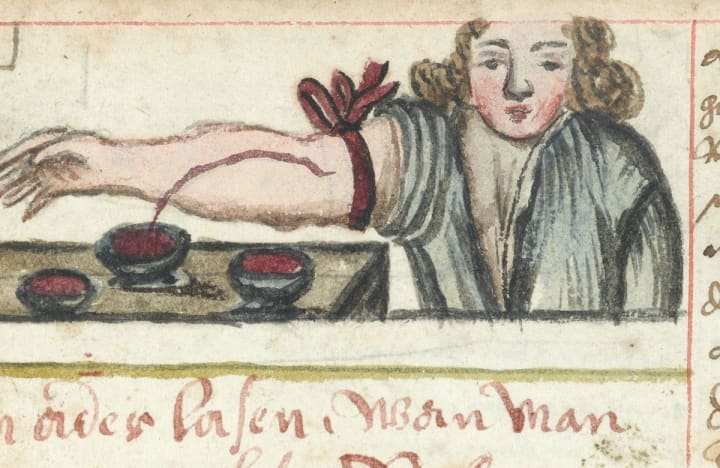Weird and Dangerous Ancient Health Practices
If you still think that going to the doctor is scary, take a look at some weird and dangerous ancient health practices.

People who are afraid of the dentist’s drill or faint at the sight of a needle might want to avoid reading this list of weird and dangerous ancient health practices. Modern technologies and accumulated knowledge make most modern healthcare procedures safe, painless, and, most importantly, effective. Such was not the case in ancient times when people were just learning to heal their bodies. There wasn’t much difference between a doctor and veterinarian or a barber and a dentist. However, people were ready for just about anything to stay healthy and alive. That’s why they were ready to comply with all the weird and dangerous ancient health practices their contemporaries had to offer.
Trepanation

You are feeling very sick, have a fever and a terrible headache. Sounds like a common cold? Not to an ancient doctor. Your problem is evil spirits who are jumping around in your brain, raising your body temperature and causing your head to ache. A simple remedy is to drill a couple of holes in your skull and let the bad guys out.
Trepanation used to be a common treatment for epilepsy, headaches, and blood clots. Surprisingly enough, many people survived the procedure. One of the variations of this practice is lobotomy. It was popular until the middle of the 20th century. A surgeon drilled a hole in a patient’s skull and removed a part of his brain in order to treat mental illness.
Corpse Medicine

Got digestive problems or persistent headaches? If a trepanation seems too harsh for you, the doctor will prescribe cannibalism. Human blood, bones, and flesh were mashed and mixed to create magic elixirs that people believed could deal with many health problems, including epilepsy and impotency.
The body part you were supposed to consume had to correspond with the problem you were experiencing. For example, a human skull was supposed to cure migraines, while fat could deal with muscle cramps. Some doctors would instruct their patients to attend executions in order to get some fresh blood from a person who was just killed.
Mercury

One of the most popular weird and dangerous ancient health practices was applying mercury. People had no idea about its toxic properties. The lack of such knowledge allowed doctors to create all kinds of healing mercury elixirs for their patients. Chinese alchemists believed that liquid mercury, also called “quicksilver,” could increase a person’s lifespan. Some charlatans promised that drinking specialized mercury brews would give their patients a chance to live forever, and even walk on water.
Mercury was also used as a treatment for sexually transmitted diseases. Some patients actually claimed that the dangerous therapy worked wonders only to die a few months later from liver or kidney problems developed by mercury poisoning.
Morphine for Children

Your child is restless and cries a lot. Give him some tasty morphine and he will be sound asleep in no time. Syrups that contained narcotics were popular in the early 19th century. Doctors advertised such elixirs as a great remedy to help children during teething periods.
Moms who were tired from sleepless nights gladly accepted the magical remedy that really did the job. Children were sleeping soundly. Afterwards they suffered withdrawal symptoms and became as restless as ever, which led to moms giving them more syrup. Many children died from overdosing on dangerous ingredients. Others developed terrible health problems.
Gum Cutting

Another one of the weird and dangerous ancient health practices to treat teething children was cutting their gums. Why is your baby crying? The teeth are coming and the gums aren’t letting them through! Cut the gums open to help the teeth come out safely.
This practice started in the 16th century when a French surgeon saw a teething infant die. He came up with an interesting theory. The gums didn’t allow the tooth to come through and that was the cause of an untimely death. Cutting teeth became a popular practice in Europe. Children underwent unnecessary surgery that often resulted in an infection followed by death. Even though the practice stayed in the past, the term “cut teeth” still exists nowadays.
Urine Therapy

Got yellow teeth, too much acne, or sensitive skin? Urine will save the day! Urine therapy was popular in many cultures, starting with the Romans, and is still going strong in the modern days. Some people believed that ingesting urine helped heal broken bones. Women used it as part of their skin care routine.
People are still practicing urine therapy as part of their homeopathic treatment for any disease out there. What they forget is that urine contains byproducts our body rejects since they are not useful. Forcing these elements back into the body is strange to say the least. While most of the weird and dangerous ancient health practices stayed in the past where they belong, this one still thrives.
Electric Shock Therapy

Problems in bed? Zap your genitals! In the end of the 19th century people believed that electricity could give human bodies the energy they lack. So, when a man had a problem getting an erection, a doctor would recommend electric shock therapy. The weak body parts were supposed to be “shocked” back into life with the help of gently applied electrical currents.
In the middle of 19th century some physicians offered men special galvanic baths. A bathtub with electrodes attached was filled with water. Such treatment was supposed to work wonders in just six sessions. Other doctors offered local electric baths where just the sexual organs were submerged in water. Surprisingly enough, electric shock is still being experimented with nowadays as a cure for erection problems.
Another popular way to fight erectile dysfunction was to wear an electric belt specifically designed to send a shock wave to the genitals. Applying electrical currents directly to the sexual organs led to many unfortunate consequences and often had the opposite effect.
Tobacco Smoke Enema

Tobacco is bad for your health, right? Ancient doctors thought otherwise. As soon as tobacco became widely known in the western world, doctors proclaimed it to be a useful medicine and initiated another one of the weird and dangerous ancient health practices. To treat gut problems, smoke was blown into the patient’s rectum with an enema. Other sicknesses treated by tobacco smoke included headaches, coughs, colds, and chronic fatigue.
American Indians were the first ones to use tobacco smoke in an enema. Doctors also believed that by pushing the tobacco smoke into a person’s rectum they could heal respiratory problems. Tobacco smoke enemas were used to try to resuscitate victims of drowning. In the early 19th century these enemas were “successfully” used to treat symptoms of cholera. The jig was up in the middle of 19th century, though, when Benjamin Brodie proved that nicotine is poisonous and stops blood circulation in animals.
Hot Irons

Hemorrhoids are a common problem many people experienced in the past and still do today. The patients from the old days would be very jealous of the medicine we have now because ancient doctors treated hemorrhoids with hot irons. At first a small incision was made to drain some “extra” blood, and then the wound was cauterized by applying a hot iron. Since there were no painkillers back then, it’s easy to imagine the terrible pain people had to endure to fight this common condition.
Bloodletting

In ancient times doctors considered menstruation as a way to clear a woman’s body of evil things. They went further to theorize that bloodletting could help both men and women get rid of sicknesses. Bloodletting was a very common way to deal with all types of problems, from stomach flues to acne. You didn’t even have to call a doctor to do the procedure. It was done at your nearby barber shop. This was the most common weird and dangerous health practice that disappeared by the end of the 19th century.
Malaria for Syphilis

Malaria is a terrible disease that used to kill millions of people every year. People all over the world are trying to deal with the problem. In the early 19th century it turned out that one of the side effects malaria had was killing syphilis. Syphilis doesn’t sound as scary as malaria but it kills 100 percent of patients if it reaches the brain. The fever caused by malaria creates very high temperatures that kill the syphilis bacteria. So, if you were lucky enough to survive malaria, you’d be syphilis-free.
About the Creator
David McCleary
Holistic health practitioner. Believes in using natural remedies over traditional medications whenever possible. Volunteers at a recycling plant.






Comments
There are no comments for this story
Be the first to respond and start the conversation.